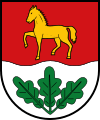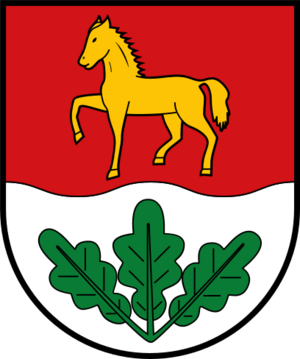Ludwigslust Rural District facts for kids
Quick facts for kids
Ludwigslust
|
||
|---|---|---|
|
||
 |
||
| Country | ||
| State | Mecklenburg-Western Pomerania | |
| Disbanded | September 2011 | |
| Capital | Ludwigslust | |
| Area | ||
| • Total | 2,517 km2 (972 sq mi) | |
| Population
(2001)
|
||
| • Total | 131,292 | |
| • Density | 52.162/km2 (135.099/sq mi) | |
| Time zone | UTC+1 (CET) | |
| • Summer (DST) | UTC+2 (CEST) | |
| Vehicle registration | LWL | |
| Website | http://www.kreis-lwl.de | |
Ludwigslust was a district (a type of local government area) in the southwest part of Mecklenburg-Western Pomerania, Germany. It was located between the Elbe river and the city of Schwerin.
Even though it was the largest district in Mecklenburg-Western Pomerania by size, it did not have a very large population. The district of Ludwigslust was officially dissolved in September 2011.
Contents
History of Ludwigslust District
After Germany became one country again in 1990, some changes were made to how the country was divided. The areas of Hagenow and Ludwigslust were first set up as separate districts.
Then, in 1994, these two districts were joined together. They also added two smaller areas called Ämter (which are like groups of villages) from the nearby Schwerin-Land district. This is how the Ludwigslust district, as it was known until 2011, was created.
Understanding the Coat of Arms
The coat of arms is like a special symbol or emblem for the district. It tells a story about the area.
- The horse at the top reminds us of the famous horse breeding station in Redefin. It also shows the long history of horse breeding in this region. The old Counts of Schwerin, who ruled this area a long time ago, also used a horse as their symbol.
- The wavy line in the middle represents the Elbe river, which flows through the district.
- The three oak leaves at the bottom stand for the three main areas that joined together to form the Ludwigslust district.
- The colors used in the coat of arms come from the historic regions that once made up this area. Red and yellow are from the old county of Schwerin, while red, silver, and green are from the county of Dannenberg.
Towns and Communities
The Ludwigslust district was made up of several towns and many smaller communities. Some towns were "Amt-free," meaning they managed their own affairs without being part of a larger group of villages called an Amt.
Amt-free Towns
These were the main towns that managed themselves:
- Boizenburg
- Hagenow
- Lübtheen
- Ludwigslust
Ämter (Groups of Communities)
Many smaller towns and villages were grouped into Ämter. Each Amt had a main town where its administration was located. These groups helped manage local services for their member communities.



